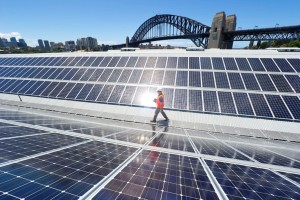 Australian investment in large-scale renewable energy projects fell sharply in the first quarter of 2016, more than six months after the Coalition government promised “certainty” after forcing Labor to agree to slash the renewable energy target to 33,000GWh.
Australian investment in large-scale renewable energy projects fell sharply in the first quarter of 2016, more than six months after the Coalition government promised “certainty” after forcing Labor to agree to slash the renewable energy target to 33,000GWh.
New data from Bloomberg New Energy Finance showed that investment in large-scale renewables – wind and solar – slumped to just $US69 million, falling back to levels seen in the midst of the investment freeze, when the then Abbott government sought to abolish the RET altogether, or seek bigger cuts.
The impact in 2014 was so dramatic that large-scale investment actually dried up completely in the last quarter of that year, but the market is still struggling as utilities avoid contracts and financiers baulk at the lingering uncertainty of the market.
BNEF said unless investment in large-scale assets picked up by the end of the year, there was a real risk of falling short of the large-scale renewable energy target by 2018.
So far, nearly all the investment in large-scale renewable energy has come from projects contracted by the ACT government, and its reverse auction scheme, or through the Clean Energy Finance Corp.
Only one project, the White Rock wind farm in northern NSW, owned by China wind energy giant Goldwind, has committed to construction relying on the RET and market prices. Dozens of other projects are in the pipeline but are struggling to get finance.
This table above (please click to enlarge) shows the pattern of investment over the last few years. BNEF notes that the bulk of investment in renewable energy has come from homes and businesses investing in rooftop solar, and increasingly battery storage.




